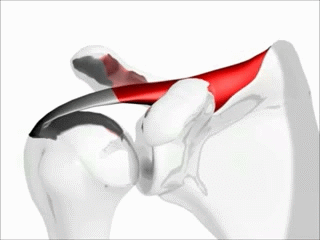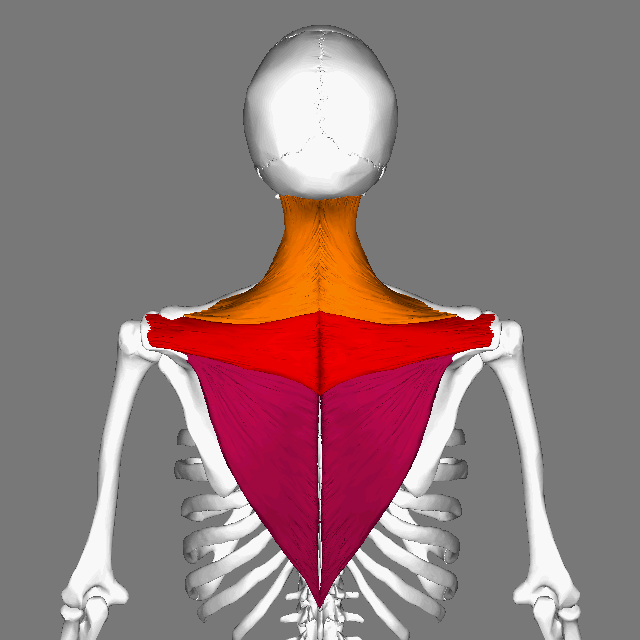Shoulder Abduction Muscles in the Upper Limb
Ever wonder how Super Man lifts his arms above his head and flies in the sky? He uses his shoulder abduction muscles! In this quick and easy lesson, we explain the shoulder muscles responsible for abducting the shoulder, the anatomy, the degrees of arm abduction for each shoulder muscle, and the nerves that innervate the shoulder abduction muscles.

Answer: His left arm! Read more below to learn why. Image Source: Pxfuel
What is Arm Abduction? What does Arm Abduction Mean?
Arm abduction, also known as shoulder abduction, is the movement of the arm away from the body in the same plane of your chest. The best example is to have your arms straight by your sides and then lifting them up in the same plane as your chest, like doing a jumping jack. Do not lift your arms in front of you or behind you – that is not arm abduction but rather arm flexion or arm extension, respectively.

What are the muscles that abduct the shoulder?
The shoulder abduction muscles are Supraspinatus, Deltoid, Trapezius, and Serratus Anterior. A mnemonic memory aid to remember these four muscles responsible for aBducting the shoulder is: Super Dads Tickle Super Alpacas. Imagine our super dads reaching up with their arms stretched out above their heads, like Super Man, and tickling a really tall super alpaca. Yep.
Mnemonic to Remember the Muscles that Abduct the Shoulder
Super Dads Tickle Super Alpacas
Supraspinatus -> Deltoid ->Trapezius ->Serratus Anterior
What are the Degrees of Arm Abduction for Each Shoulder Muscle?

Supraspinatus is the first shoulder muscle to initiate arm shoulder abduction. The supraspinatus can abduct the shoulder for the first 15 degrees (0-15 degrees). The supraspinatus is located on the greater tubercle of the humerus.

Deltoid is the second shoulder muscle responsible for arm abduction. The deltoid can abduct the shoulder arm from 15 degrees to 90 degrees (15-90 degrees).

Trapezius is the third shoulder muscle responsible for arm abduction. The trapezius abducts the arm from 90 degrees to 160 degrees (90-160 degrees) (Penn State), or also just greater than >90 degrees (USMLE First Aid) (Lam et al 2019).

Serratus Anterior is the last shoulder muscle responsible for arm abduction. This muscle can abduct the arm greater than > 100 degrees (USMLE First Aid), or from 160 degrees to 180 degrees (160-180 degrees) (Penn State).
What are the nerves that innervate the shoulder arm abduction muscles?
Supraspinatus is innervated by the Suprascapular Nerve.
Deltoid is innervated by the Axillary Nerve.
Trapezius is innervated by the Accessory Nerve.
Serratus Anterior is innervated by the Long Thoracic Nerve.

What are the Blood Supply Arteries/Vasculature to the Shoulder Arm Abduction Muscles?
Blood supply to the Supraspinatus is the suprascapular artery.
Blood supply to the Deltoid is the posterior circumflex humeral artery.
Blood supply to the Trapezius is the Transverse Cervical Artery
Blood supply to the Serratus Anterior is the circumflex scapular artery.

shoulder muscle abducts at 15-90 degrees?
Anterior
Works Cited
Fanelli, Matthew. Upper Limb: Radiology Tutorial of Two-Dimensional Anatomy. Penn State Hershey College of Medicine.
Kalluri AG, Miao KH, Bordoni B. Anatomy, Shoulder and Upper Limb, Supraclavicular Fossa. 2021 Feb 8. In: StatPearls [Internet]. Treasure Island (FL): StatPearls Publishing; 2021 Jan–. PMID: 30725950.
Lam, Jonathan; Burdoni, Bruno. Anatomy, Shoulder and Upper Limb, Arm Abductor MusclesLam, Jonathan; Burdoni, Bruno. NCBI. 2019.
Copyright © 2021 Moosmosis Organization: All Rights Reserved
All rights reserved. This essay or any portion thereof may not be reproduced or used in any manner whatsoever without the express written permission of the publisher.














Concise. Thank you for writing this.
LikeLiked by 2 people
You’re very welcome, kind soul! Happy learning!! 🙂
LikeLike
excellent article!
LikeLiked by 2 people
Thank you Percy! So nice of you. 🙂
LikeLike
You’re welcome Moosmosis!
LikeLiked by 1 person
WONDERFUL Post.thanks for share..extra wait .. …
LikeLiked by 1 person
Happy to hear, Kristal! 😀
LikeLike
Spot on with this write-up, I actually assume this web site wants way more consideration. I’ll most likely be once more to learn far more, thanks for that info.
LikeLiked by 1 person
Thank you Paul! Happy learning! 😀
LikeLike
You made some decent factors there. I appeared on the web for the problem and found this very helpful. Thank you.
LikeLiked by 1 person
We are a group of volunteers and starting a new scheme in our community. Your website provided us with valuable info to work on. You have done a formidable job and our entire community will be thankful to you.
LikeLiked by 1 person
Thank you. That is very kind of you, Hassan. Happy to help spread the joy of learning. 🙂
LikeLiked by 1 person
This website really has all of the info I wanted about this subject and didn’t know who to ask.
LikeLiked by 1 person
Awesome article! so helpful 😀
LikeLiked by 1 person
Great article!
LikeLiked by 2 people
Thank you Tammy!!
LikeLiked by 1 person
Love a man with a muscle back 😘
Fabulous article 👍
LikeLiked by 1 person
Haha, Pamela! That made me laugh out loud. Glad you enjoyed the article and muscles. 😉
LikeLiked by 2 people
Fantastic article on shoulder abduction muscles! Great stuff to know when I work out
LikeLiked by 2 people
Haha, those shoulder abduction muscles really come in handy during work outs!
LikeLiked by 1 person
Absolutely! Excellent articles!
LikeLiked by 1 person
Hello. impressive job. I did not anticipate this. This is a impressive story. Thanks!
LikeLiked by 1 person
Thank you Darnell! 🙂 Glad you found our article helpful!
LikeLiked by 1 person
Very efficiently written article. It will be beneficial to anybody who usess it, including yours truly :). Keep up the good work – i will definitely read more posts.
LikeLiked by 1 person
Thank you Styles! 🙂
LikeLiked by 1 person
Hі my lovеd one! I’m currently studying for my medical exams, and I wish to say that this article is nicely written and succinct with all the necessary important information!
LikeLiked by 1 person
So glad you found this helpful, Mardis! Happy learning, and wishing you the bestest luck on your medical exams, future doctor!
LikeLiked by 1 person
It’s really a nice and helpful piece of information. I’m glad that you shared this useful information with us. Please keep us informed like this. Thank you for sharing.
LikeLiked by 1 person
Thank you Gralion! We’re so glad this helped. Happy learning, and wishing you the best on your medical studies journey!!
LikeLiked by 1 person
Hello my loved one! I want to say that this article is amazing, great written and include almost all important infos. I’d like to see more posts like this.
LikeLiked by 2 people
Thank you, Gralion! That’s very kind of you. Happy learning! 🙂
LikeLiked by 1 person